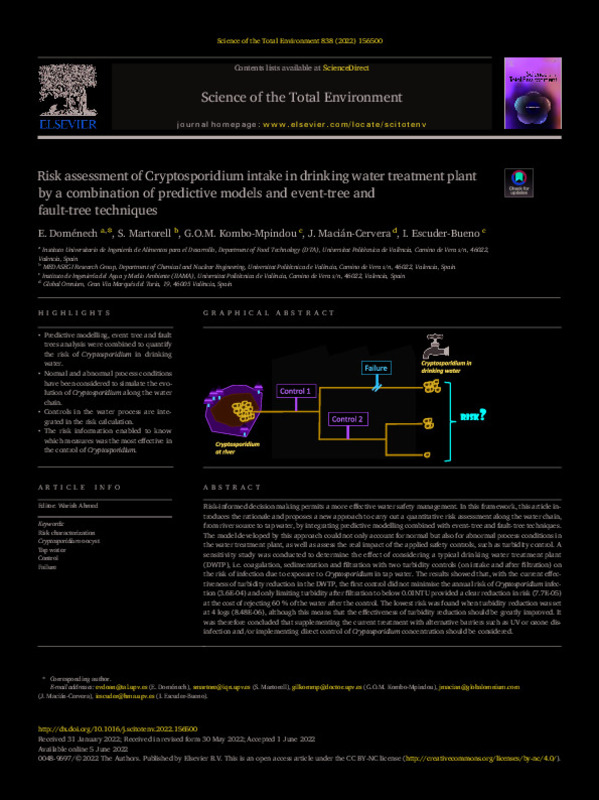|
Resumen:
|
[EN] Risk-informed decision making permits a more effective water safety management. In this framework, this article introduces the rationale and proposes a new approach to carry out a quantitative risk assessment along ...[+]
[EN] Risk-informed decision making permits a more effective water safety management. In this framework, this article introduces the rationale and proposes a new approach to carry out a quantitative risk assessment along the water chain, from river source to tap water, by integrating predictivemodelling combined with event-tree and fault-tree techniques. The model developed by this approach could not only account for normal but also for abnormal process conditions in the water treatment plant, as well as assess the real impact of the applied safety controls, such as turbidity control. A sensitivity study was conducted to determine the effect of considering a typical drinking water treatment plant (DWTP), i.e. coagulation, sedimentation and filtration with two turbidity controls (on intake and after filtration) on the risk of infection due to exposure to Cryptosporidium in tap water. The results showed that, with the current effectiveness of turbidity reduction in the DWTP, the first control did not minimise the annual risk of Cryptosporidium infection (3.6E-04) and only limiting turbidity after filtration to below0.01NTU provided a clear reduction in risk (7.7E-05) at the cost of rejecting 60% of the water after the control. The lowest risk was found when turbidity reduction was set at 4 logs (8.48E-06), although this means that the effectiveness of turbidity reduction should be greatly improved. It was therefore concluded that supplementing the current treatment with alternative barriers such as UV or ozone disinfection and/or implementing direct control of Cryptosporidium concentration should be considered
[-]
|









